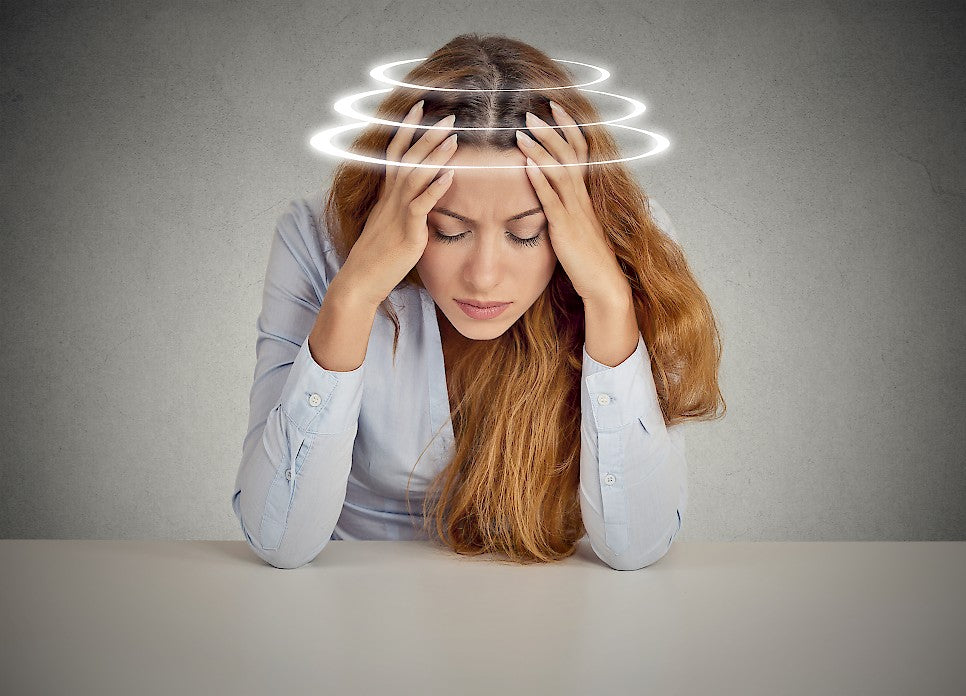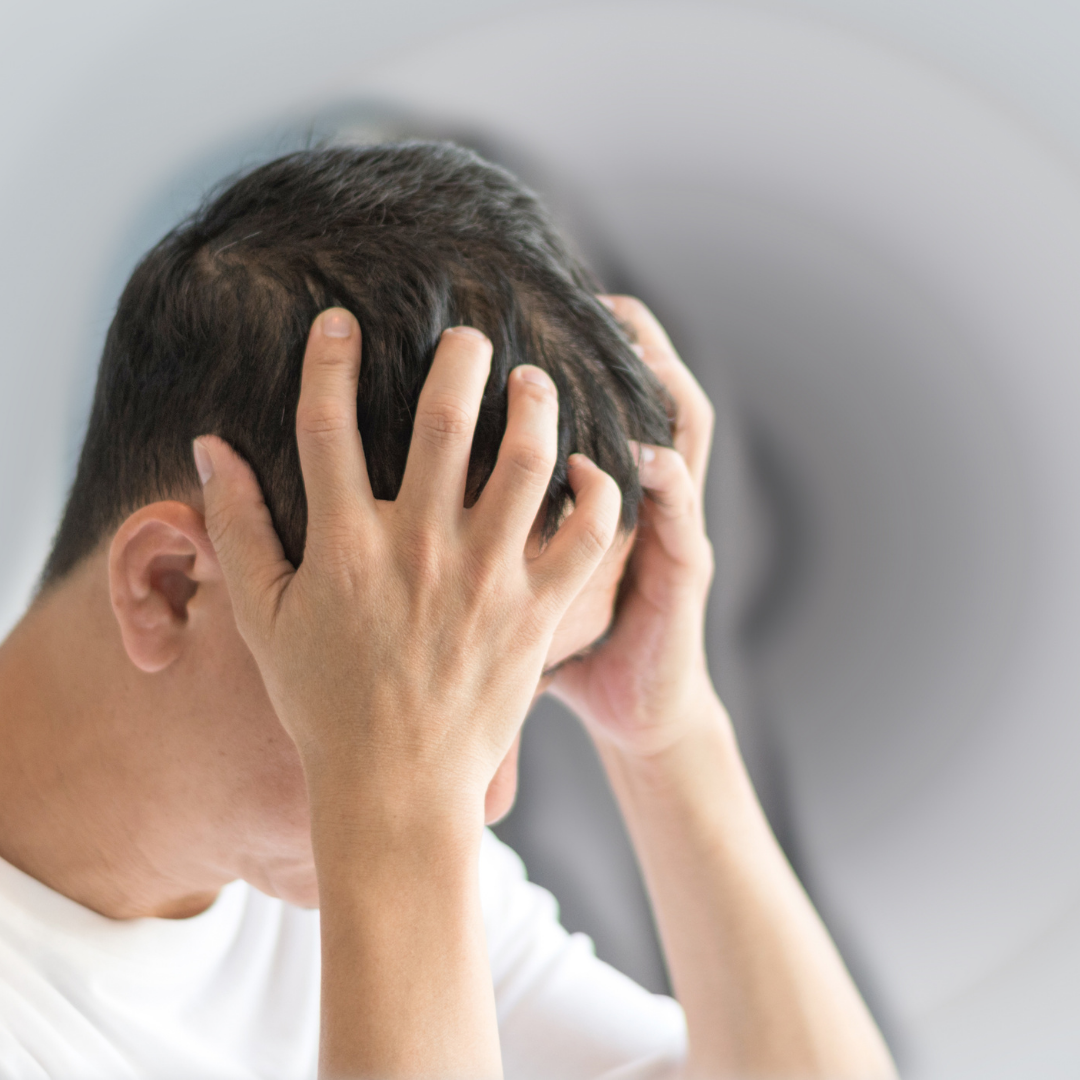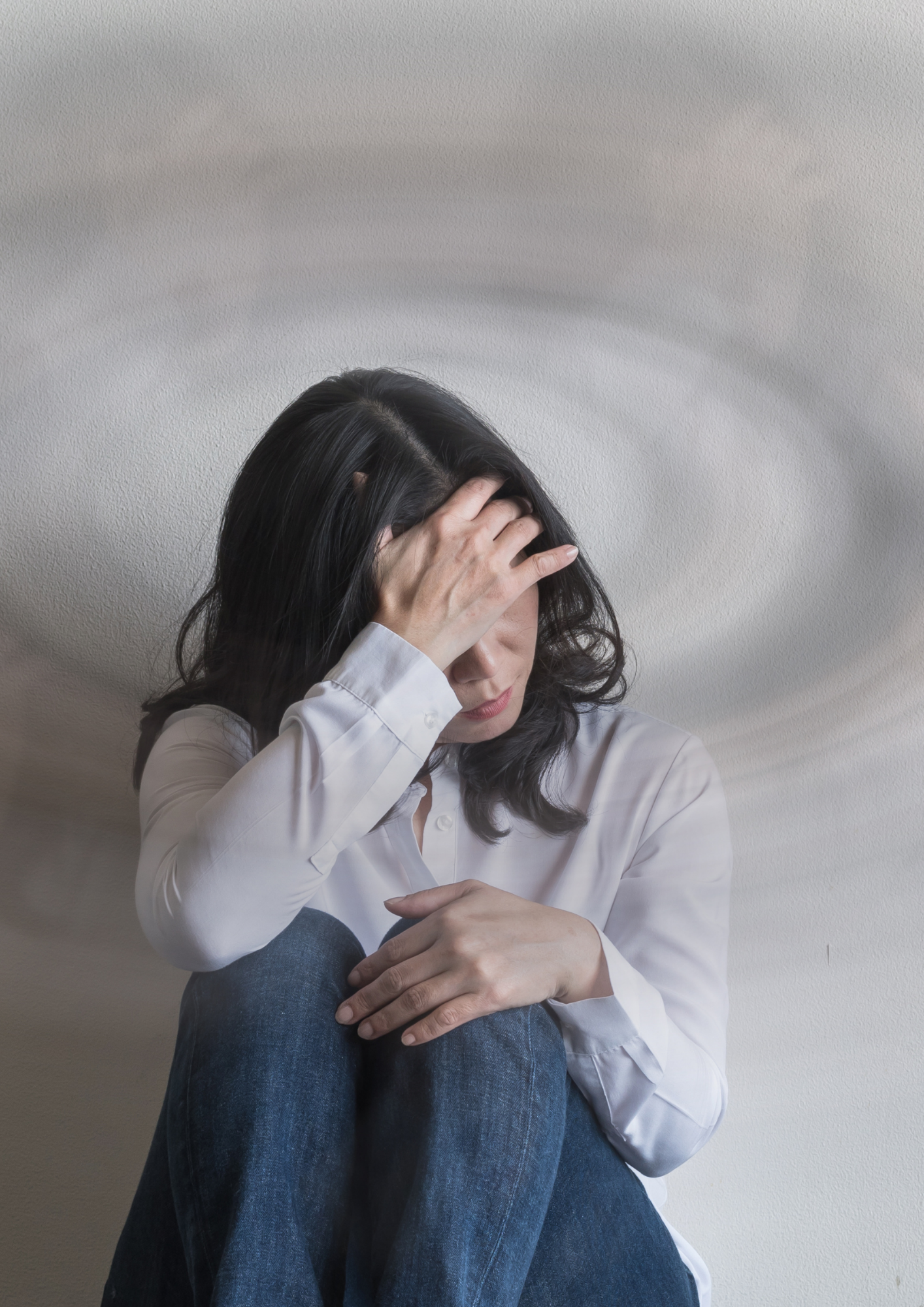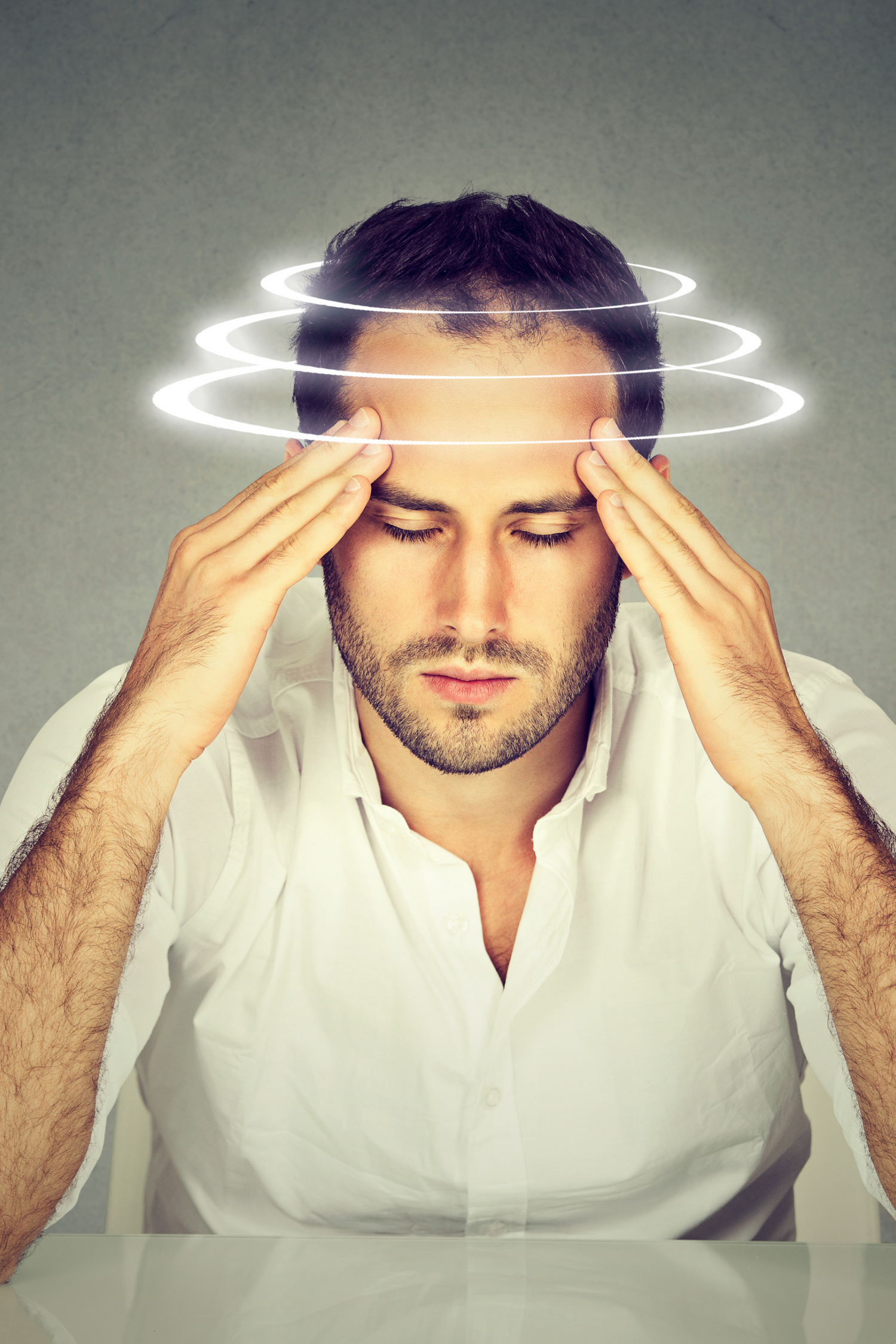
Dizziness/Vertigo
Dizziness is a common complaint in the chiropractic office. It is a generic term that must be clearly defined and its cause properly characterized and diagnosed for appropriate treatment to be implemented. It is a complaint that is often treatable via chiropractic manipulative and myofascial/rehabilitative procedures.
The first stage in the workup of a complaint of dizziness is to accurately identify the actual nature of the symptom. There are essentially four symptoms that can be described by a patient as being "dizziness."
- lightheadedness -- The patient feels 'not right in the head.'
- presyncope -- The patient feels 'faint.'
- disequilibrium -- The patient feels off balance, often as if they are being 'pulled to one side' and feels as if they could easily fall over.
- vertigo -- The patient feels as if they are spinning or the world is spinning around them. This can often occur in acute attacks, or it can be a constant, low level feeling. This can be rotatory or can occur in a sagittal plane.

Karel Lewit, MD, one of the foremost authorities in the world on locomotor system dysfunction and its effects on equilibrium, states: "It is important to stress that a cervical factor may be present in all forms of vertigo and dizziness ... in no field is manipulation more effective than in the treatment of disturbances of equilibrium."
Because the entire locomotor as well as vestibular and visual system is involved in the regulation of equilibrium, all factors must be considered in the patient who suffers from disorders of this system. Michel Norre, noted authority in the field of vertigo and disequilibrium, states: "The dysfunction causing vertigo concerns the total balance function and not the inner ear function alone."2 The types of dizziness that are generally most likely to fall into the chiropractic rehabilitative realm are disequilibrium and vertigo.
Disequilibrium is most often cervical in origin, as has been demonstrated by Hulse.3 It has been shown in several studies that the cervical spine plays a very strong role in the body's regulation of equilibrium sense.4-7 In fact, Guyton7 states that the cervical spine plays the most important role in this regulation.

Vertigo, as stated earlier, is by definition an abnormal sensation of movement, usually spinning. Attacks of vertigo can be elicited by various maneuvers or can be constant. When the vertigo is caused by Meniere's disease it is accompanied by unilateral tinnitus and hearing loss. Benign positional vertigo is caused by dysfunction of the labyrinthine apparatus in the inner ear and attacks are elicited by changes of head position in space. Cervicogenic vertigo also occurs in attacks and these attacks are elicited by changes of head position relative to the trunk. Vetebrobasilar insufficiency can cause vertigo, though with this disorder the vertigo almost never occurs by itself,9 rather being generally accompanied by other symptoms.
So it can be seen that before a referral or management strategy can be formulated, there must be accurate diagnosis of the cause of the disequilibrium or vertigo. There are various treatment/rehabilitative approaches that can be taken to restore normal function and eliminate the complaint.
When vertigo or disequilibrium is caused by dysfunction in the cervical spine or labyrinythine apparatus, it is most often treatable in the chiropractic setting. Optimum function of the cervical spine is essential to the recovery from these disorders regardless of the cause. Lewit10 showed that patients with Meneire's syndrome can be effectively treated with manipulation, demonstrating that 79 percent of 21 cases showed an "excellent" outcome. Fitz-Ritson8 showed that patients with posttramatic vertigo of cervical origin treated with chiropractic manipulative, myofascial and rehabilitative procedures experienced a 90.2 percent success rate. Treatment must not only be directed towards the correction of joint dysfunction via manipulation, but must also be directed toward muscular dysfunction, such as myofascial trigger points and muscle tightness.11 In addition, faulty movement patterns that involve the cervical spine, including cervical flexion, sit-to-stand, breathing and swallowing12 must be detected and corrected.

This correction of imbalances may take the form of stretching and/or inhibiting the tight/hyperactive upper cervical extensors and facilitating the deep neck flexors, either with hands-on techniques or with subcortical exercise.
Patients with disorders of equilibrium often require additional training for complete restoration of equilibrial reaction to bring about normalcy. One of the most effective methods of doing this is through propriosensory retraining. This specific training creates a graded challenge to the patients equilibrial system to retrain their entire locomotor system to respond more appropriately (ultimately at optimum) to the gravitational perterbations with which we all are faced on a daily basis. The propriosensory exercises that are given to the patient are designed to reprogram the subcortical postural reactions that often become lost due to the sedentary lifestyle that many of us lead, as well as the locomotor system dysfunction that is often the underlying cause of vertigo and disequelibrium syndromes. As with other disorders of the locomotor system, one must look at the entire system, for the underlying cause of the clinical syndrome. This "holistic" approach will allow full assessment of the patient from a functional standpoint.
The various symptoms that fall under the category of dizziness can affect people in a variety of ways, from being a mild nuisance to being severely disabling. Appropriate intervention can often be tantamount to life saving to the patient. This appropriate intervention must be based on a full evaluation of the locomotor system, including examination of movement patterns; it must often include rehabilitative procedures and propriosensory retraining to completely bring about return to full function.
References
1. Lewit K. Manipulative Therapy in the Rehabilitation of the Motor System. Boston: Butterworths, 1985
2. Norre ME. Neurophysiology of vertigo with special reference to cervical vertigo: A review. Medica Physica 1986; 9:183-194.
3. Hulse M. Disequilibrium, caused by a functional disturbance of the upper cervical spine. Clinical aspects and differential diagnosis. Man Med 1983; 1:18-23.
4. de Jong PTVM, et al. Ataxia and nystagmus induced by injection of local anesthetics in the neck. Ann Neurol 1977; 1:240-246.
5. Abrahams VC, Falchetto S. Hind leg ataxia of cervical origin and cervico-lumbar spinal interactions with a supratentorial pathway. J Physiol 1969; 203:435-447.
6. Fitz-Ritson D. Neuroanatomy and neurophysiology of the upper cervical spine. In: Vernon H. ed. The Upper Cervical Syndrome: Chiropractic Diagnosis and Treatment. Baltimore: Williams and Wilkens, 1988:48-85.
7. Guyton AC. Textbook of Medical Physiology. 7th ed. Philadelphia: Lea and Febiger, 1989.
8. Fitz-Ritson D. Assessment of cervicogenic vertigo. J Manipulative Physiol Ther 1991; 14(3):193-198.
9. Weiner HL, Levitt LP. Neurology for the House Officer. 4th ed. Baltimore: Williams and Wilkens, 1989.
10. Lewit K. Disturbed balance due to lesions of the cranio-cervical junction. J Orthop Med 1998; 3:58-61.
11. Murphy DR. The neglected muscular system: Its role in the pathogenesis of the subluxation complex. J Chiro 1990; 27(12):36-40.
12. Murphy DR. The sternocleidomastoid muscle: Clinical considerations in the causation of head and face pain. Chiro Tech 1995; 7(1):12-17.
13. Jacobson GP, Newman CW. The development of the dizziness handicap inventory. Arch Otolaryngol Head Neck Surg 1990; 116:424-427.
14. Jacobson GP, Newman CW, Hunter L, Blzer BK. Balance function test correlates of the dizziness handicap inventory. J Am Acad Audiol 1991; 2:253-260.

